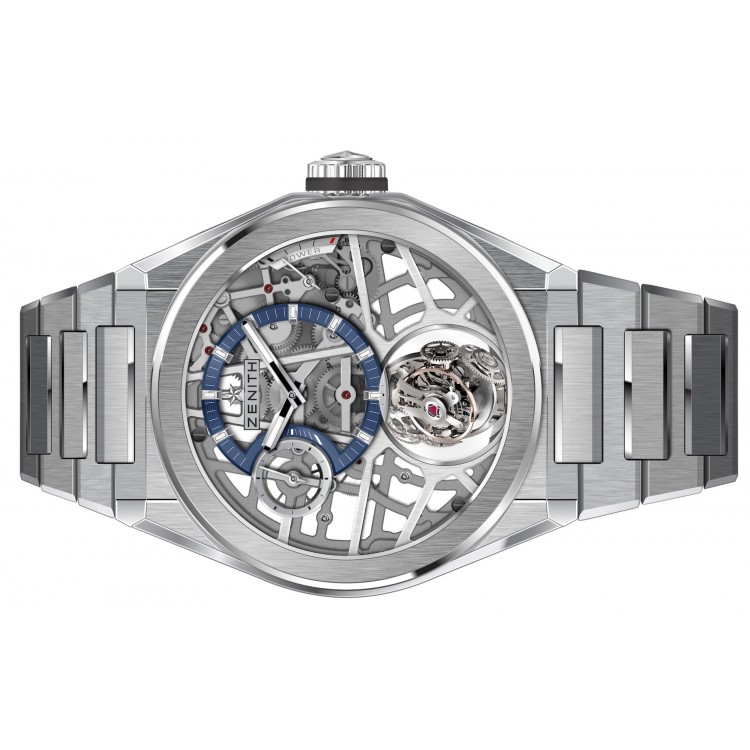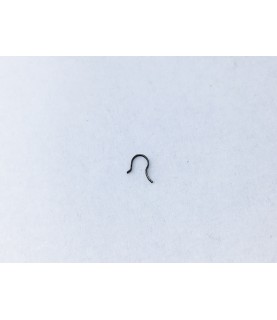Test Bench: Zenith Defy Zero G

The object of this test bench incorporates the latest advances in Zenith's research as part of its quest for chronometry. The track explored in recent years by the brand's technical department is a head-on response to one of the factors disrupting the movement of watches: gravity. The nature of the problem became apparent from the very beginning of Huygens' work on the balance-spring and isochronism.

In the 17th century, "marine" watchmakers took account of this by affixing their chronometers to gyroscopes in order to maintain them in a constant horizontal position whatever the state of the seas. With the advent of the pocket watch between the 17th and 18th centuries, this solution could not be adapted for obvious reasons of size. It was then that Abraham-Louis Breguet invented the tourbillon which mixes the vertical positions so as to derive an average rate. By successfully placing the escapement and balance-spring assembly on a gyroscopic system, Zenith addresses the source of the problem, and does so in a clearly successful manner as revealed by our tests.

EXTERIOR: One might be tempted to say that the question of the exterior is secondary, given connoisseurs' naturally strong interest in the mechanical characteristics of this watch. The overall aesthetic is based on a design evoking that of restyled 1970s icons. The continuity of the case and movement architecture asserts itself naturally by radiating from the gyroscope. Our version was entirely crafted from titanium, and whether it comes to aesthetics, comfort or ergonomics, the Defy Zero G is remarkable in terms of the efforts that have been made to reduce the volume of the gyroscope. This drastic trimming down means the movement can be housed in a case measuring 44mm in diameter and 14.8mm thick, corresponding to a very reasonably sized chronograph.

MOVEMENT: El Primero. A name, a legend that already reveals the eagerly awaited technical characteristics of this new caliber. The new interpretation is hand-wound, doubtless so as to minimize the thickness of the watch. It features slightly offset hours and minutes displays, alongside a power-reserve indicator and small seconds. This caliber is of course named after the illustrious family of Zenith movements oscillating at the (high) frequency of 36,600 vibrations per hour. Successfully fitting all this inside a further miniaturized gyroscope represents a major feat in itself. This downscaling not only enhances the ergonomics of the watch, but above all optimizes its chronometry (precision timing). This 8812S caliber is endowed with a 50-hour power reserve, a real performance given the complexity of the transmission.

This autonomy proves all the more adequate given the constancy of the chronometry throughout the entire period. Even two full columns would prove insufficient to extol the intelligence of the gyroscopic system and the enchanting sight of its work in compensating for wrist movements. No less than 139 of the 324 movement components are indeed dedicated to the gyroscopic cage. A marvelous demonstration of mechanical ingenuity placed in the service of chronometry. Its spartan, industrial-style decoration is justified by the incisive design of the watch and by its very reasonable price positioning.

TESTS: No table is required to illustrate the results of our measurements, since the magic of the gyroscope maintains the balance-wheel in a consistently horizontal position. We thus carried out one measurement at full wind and another after 24 hours in operation. To conduct even more sophisticated testing, we would love to have been able to measure rates directly on the wrist or on a wear simulator, which we unfortunately did not have available. The inertia of the gyroscopic cage can cause variations that are difficult to evaluate without such equipment.

In order to see if frictions of the gyroscope could cause differences in amplitude or even rate, we first measured the six positions. The system proved to be optimal in this respect and the differences were so minimal that we finally opted to leave the watch in the vertical 6 o'clock position only, so as not to leave the gyroscope on the plane of the movement and thus place it in the least favorable theoretical situation. At full wind, the amplitude was 292° for a rate variation of +3sec/day. After 24 hours the amplitude measured was 260° for a rate variation of +4sec/day. The goal thus seems in any case to be perfectly met under static measurement conditions.





